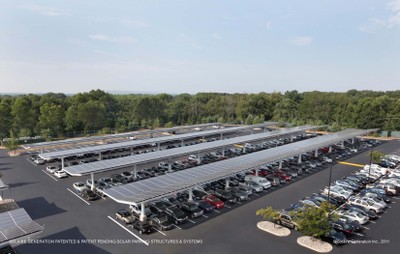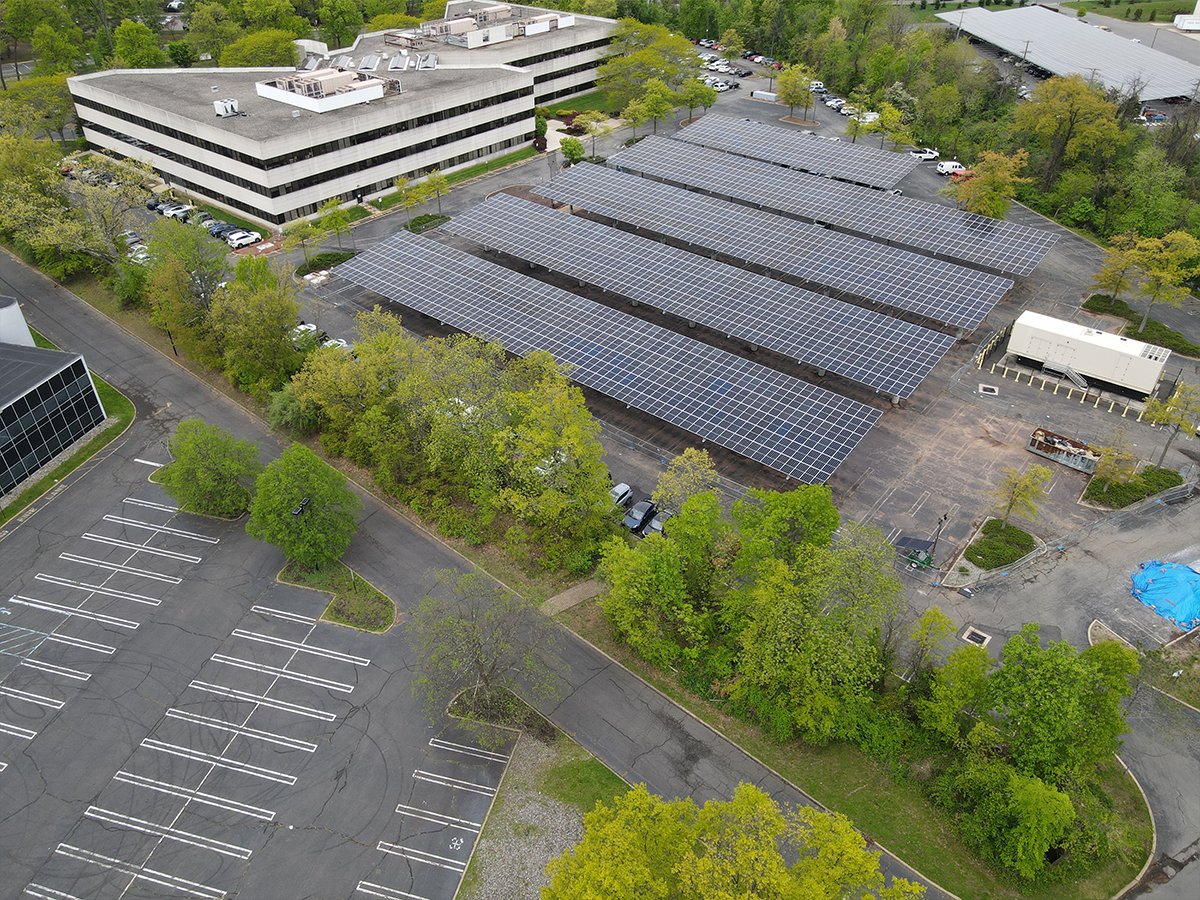Rutgers University, the largest public university system in New Jersey, has committed to greening its campuses with the addition of close to 15 MW of solar carport canopy arrays this year.
As part of its Climate Action Plan from 2021, in which the university has a goal of becoming carbon neutral by 2040, the 6,000-acre plus university system will add 16 solar carport installations by DSD Renewables at its four main campuses and off campus buildings as well.
The carports represent the first initiative of Rutgers President Jonathan Holloway since the 2021 Climate Action Plan was announced, with the solar installations to generate 18 GWh of clean power each year. The car canopy systems are to be deployed at the following locations:
| 1 | Rutgers Busch Livingston | 8,809.6 Total kWDC |
| 2 | Rutgers Camden | 393.3 Total kWDC |
| 3 | Rutgers College Ave | 769.5 Total kWDC |
| 4 | Rutgers Cook Douglass | 3,625.92 Total kWDC |
| 5 | Rutgers Off Campus | 906.3 Total kWDC |
The carport solar projects are being financed through a 15-year power purchase agreement (PPA) at no upfront cost to the university. DSD will build, own and operate the solar canopies across campuses upon completion, and provide operations and maintenance services. The Rutgers Division of Institutional Planning and Operations (IP&O) will be the direct offtake counterparty for the clean power produced at a predetermined, discounted rate compared to the local utility.
“It’s an unconventional project in that we are not spending university funds, but accruing significant benefits,” said Frank Wong, assistant vice president, university planning and development at Rutgers IP&O. “The project will significantly reduce our energy costs over time and be a visible sign of our ongoing sustainability efforts.”

Image: Rutgers University
Construction is currently underway across several of the university’s parking lots, and the solar carports are expected to be complete by the end of the year. Once complete, the carports will create shaded parking lot coverage, reducing urban heat island effects of surface parking lots. The carports will also provide cover from snowfall and precipitation during winter months.
“Having the opportunity to work with such a well-known and highly regarded university, such as Rutgers, is an honor,” says Kevin Brooks, senior director, origination, DSD Renewables. “This is an exciting portfolio of projects that will provide Rutgers students across five campuses with access to renewable energy, and will ultimately bring the university closer to its sustainability goals while saving money on electricity.”
Climate Action Plan
With an enrollment of 67,620 students, Rutgers first installed solar canopies onto its 33-acre Livington, N.J. campus in 2013. Currently its Livingston campus generates 1.4 MW of solar from 7,993 solar panels and 8 MW of solar canopies composed of about 33,000 solar panels.
A 2021 assessment of campus solar resources suggested that 26 MW of solar could be built on parking lots and 16 MW on building rooftops.
The university’s CAP report highlights $770 million worth of estimated capital cost investments into on-campus solar generation and off-campus power purchase agreements for solar or wind power, reducing carbon emissions by 116,000 tons and generating $40 million in annual energy savings from lowering its reliance on the local grid.
Rutgers’ clean energy savings includes an $80 per MWh state subsidy under the New Jersey Transition Renewable Energy Credit program, the Garden State’s renewable energy credit (REC) program.
Besides PPA agreements, Rutgers is also reviewing cooperative and community solar developments for procuring solar, in which the university could become a partial owner of the system alongside community members, it said in the report.
Other direct and grid emissions solutions the university is pursuing include:
- Retrofitting and energy efficient buildings, decommission inefficient buildings and adopt new construction and energy standards.
- Install metering, monitoring and energy control systems.
- Electric vehicle (EV) fleet systems and charging
- Decarbonize heating systems by phasing out natural gas heating and cogeneration
Rutgers intends to be fully divested from fossil fuel energy resources by 2031, according to its CAP report.
In March 2020, Rutgers became the 22nd member institution of the University Climate Change Coalition (UC3), a coalition of more than two dozen U.S. private and public universities committed to reducing global emissions, including through clean energy and energy efficiency development. UC3 is monitored and administered by Second Nature, a nonprofit group that tracks climate action plans at higher education institutions.
This content is protected by copyright and may not be reused. If you want to cooperate with us and would like to reuse some of our content, please contact: editors@pv-magazine.com.









By submitting this form you agree to pv magazine using your data for the purposes of publishing your comment.
Your personal data will only be disclosed or otherwise transmitted to third parties for the purposes of spam filtering or if this is necessary for technical maintenance of the website. Any other transfer to third parties will not take place unless this is justified on the basis of applicable data protection regulations or if pv magazine is legally obliged to do so.
You may revoke this consent at any time with effect for the future, in which case your personal data will be deleted immediately. Otherwise, your data will be deleted if pv magazine has processed your request or the purpose of data storage is fulfilled.
Further information on data privacy can be found in our Data Protection Policy.